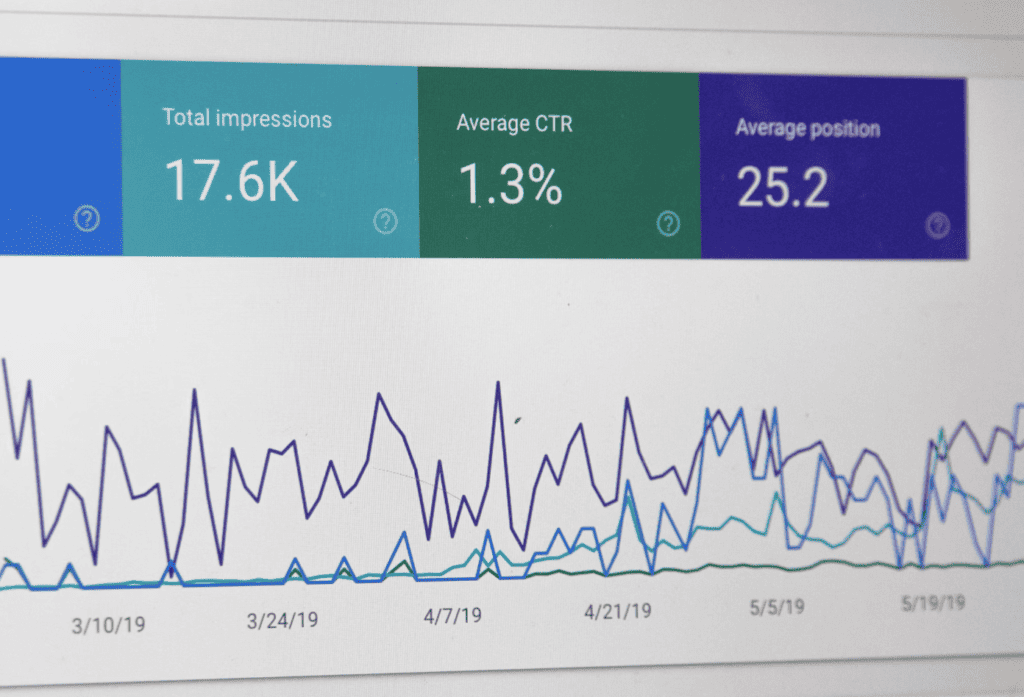I have a friend who runs an event management agency. He clients are MNCs and large corporates. Over the past many years he has seen how networking events, conferences and product launch events that he has been curating for his clients have grown in size and attendees.
This is a reflection of the fact that events that promote a good discussion of ideas, encourage participation from a diverse community and add value to all those who attend end up having a good business impact on overall business growth.
The same principle applies to small and local businesses. Small businesses should be actively looking for opportunities to host events. Local events are an integral part of any offline marketing strategy for small businesses to drive growth.
Any offline marketing strategy is incomplete without planning for local advertising tactics as a small business and hosting local or community events.
How should should you plan to organise a local community event as a small business?

Lets go through the basics of how a small business owner should approach planning a local or community event. This section is meant for business owners who have not hosted one yet or have limited experience in doing so. Local community events help small businesses with networking to grow the business.
I have curated this set of basic step by step tasks after consulting with my friend who owns an event management agency. If a small business owner were to follow these steps, he or she can be rest assured that the attendees will have a pleasant time at the event.
Define the Purpose and Goals – Decide why you are organising the event in the first place. Is it for building awareness, just to engage the community, fundraising, or celebrating a milestone or getting in new customers? You can have multiple objectives for the same event or just focus on one, but be clear on what you want as the outcome and let everyone who is organising with you know the expected outcome.
Budget Planning – Assess how much you can spend on the event. This includes costs for venue, entertainment, refreshments, marketing, and any permits or licenses needed.
How much does it really cost to host an event with 100 attendees downtown?
As a general rule, to host an event, in a downtown venue costs about $12,000, with the average cost per person coming to about $120. This includes the cost of renting the venue, the cost of drinks and food that is served and cost of utilities. Though this is an averaged out cost, you may find increase or decrease depending on your location and what you include in the F&B.
Choose the Right Date and Venue – Pick a date that does not clash with other major community events. The venue should be accessible, accommodating the expected number of attendees, and fit within your budget, Try to pick the time and day of the week according to your target audience and their availability.

Obtain Necessary Permits and Insurance – Depending on the nature and location of your event, you may need permits from your local government, the utility company, the neighbourhood association etc. Also, consider getting liability insurance for the event just in case something that is unplanned occurs and your business is not held liable for it.
Plan the Event Details – This is something that many small business owners do not take seriously. Putting some thinking about the details will help the attendees have a memorable experience. The following areas are those that you may want to consider in the event details.
Theme and Activities – Choose a theme that resonates with your brand and community. Plan activities that are engaging and appropriate for your target audience. For example, if your business is around ‘Plumbing’, a potential theme for an event can be ‘best practices to reduce water wastage’ in regular installations.
Entertainment and Speakers: Depending on your event, you might want to include some for of entertainment. Don’t waste too much of your budget on entertainment unless that is the main attraction for your event.
Catering: If food and drinks are part of your event, decide whether to hire a caterer or manage it in-house. For most business events or networking events, self-catering with snacks from a partner local business is often the best way to go about it. It helps a fellow business owner gain visibility as well.
Promote the Event – Needless to say, if your audience don’t know about your event, no one will turn up. You could also promote what value folks will get out of attending your event. Get registrations for your event done over as many channels as possible. This is one of the most neglected aspects of any small business event that I have been to. Getting registration details will help you build a list of potential customers who can be re-targeted over multiple channels even if they don’t turn up at the event.

Advertise in Local Media – Use local newspapers, local radio stations, and community bulletins for publicity. Increase the frequency of ads starting just a week prior to your event.
Social Media and Online Marketing – Leverage social media platforms, email newsletters, and your business website, use banners wisely. Don’t go berserk in paid ads here, you will not see ROI for such a short duration ad campaign.
Flyers and Posters: Distribute them in your business and around the community and through your partner businesses.
Engage with the Community and Partners: Collaborate with other local businesses, community groups, or influencers to broaden your reach and add value to your event.
Recruit Volunteers or Staff: Ensure you have enough people to help before, during, and after the event. Students are a good source of volunteers as they can earn an income while being super energetic at the same time. Ensure that they are trained and equipped to handle basic questions from the attendees.
Final Preparations and Contingency Planning: Finalize all the details a few days before the event. Have a backup plan for potential issues like bad weather or technical difficulties.
Execution and Management on the Day: Ensure everything runs smoothly on the day of the event. Assign roles to your team members, such as greeting guests, managing activities, or handling emergencies.
Post-Event Follow-Up: This is again a very neglected aspect of small business events in my personal experience. Many business owners do not follow up with the attendees. After the event, thank your attendees, volunteers, and any partners or sponsors. Gather feedback to assess the success of the event and identify areas for improvement. Send out emails after a few days to everyone who attended as well to those who expressed interest but could not make it.
How can a small business identify good locations downtown to get a good footfall and ensure that it achieves its marketing outcomes?

The secret to amplifying the impact of an event is not the main content, but the location and ambience. A warm, sophisticated ambience downtown will go a long way for a small business to create a great impression in the minds of potential customers.
There are some basic checks you need to do as a business owner which will help you picking a good location downtown for your event.
- Target Market Analysis: Know your audience. Understand the demographics, preferences and behaviors of your target market. This helps in choosing a location where your ideal customers are likely to frequent or have an aspiration to visit.
- Foot Traffic Assessment: Evaluate potential areas for the volume and type of foot traffic. Visiting different locations at various times and days can provide insights into the pedestrian flow and the presence of your target demographic. If the location can create enough buzz, it may attract free local news media coverage as well.
- Competitor Analysis: Look at where your competitors are located. Being near them can be beneficial if you offer something unique or superior so that potential customers can mentally do an immediate comparison.
- Visibility and Accessibility: Choose a location that is easily seen and reached by pedestrians. Good signage, accessibility by public transport, and the availability of parking can significantly impact foot traffic.
- Proximity to Complementary Businesses: Being near businesses that complement rather than compete with yours can increase footfall. For example, a coffee shop near a bookstore or a gym near a health food store.
- Community and Cultural Fit: Ensure the location aligns with your brand image and is a part of a community that resonates with your business values and offerings.
- Rent vs Revenue Potential: Balance the cost of renting the space with the potential revenue. Prime locations cost more, so ensure the increased foot traffic will translate into enough sales to justify the expense. Plan this well in advance and once you have the locations shortlisted, shop around for a discount. If you book a venue a few months in advance, chances are that you will get a good quote.
How can a small business go about curating an attendee list for the event?

For a small business to curate an attendee list for an event, it’s crucial to focus on attracting the right people, including potential and existing customers. First, analyze your customer base and identify people who are most likely to be interested in your event. Reach out to these customers through direct invitations, either via email or through personalized messages. Engage with people on social media, encouraging them to spread the word among like-minded individuals.
Leveraging your business network is also essential. Invite people who are influential in your industry or community, as they can attract more people to your event. Collaborate with other local businesses to tap into their customer base, offering to promote their services in exchange.
Additionally, use your business’s loyalty programs to reward regular customers with exclusive invites. This not only appreciates loyal people but also encourages others to engage more with your business.
Once you have done the above, open a pre-registration for your event and promote the pre-registration through all channels you have at your disposal. Having a pre-registration for those who are not your customers, will create a feeling of FOMO as they may not be able to attend if they don’t register.
Promote this through local advertising and social media, emphasizing the benefits and unique experiences people can expect. This approach helps build a diverse and dynamic group of attendees, blending loyal customers with new faces, fostering community engagement and business growth.
What this also does is it increases your lead pool and potential audience list. Doing a few events every year may be beneficial just to build an audience list for a business.
How should a small business ensure that potential attendees actually show up at your event?

There are 3 things that always work according to my friend who runs the event management company. Any business that does all the 3 can expect at least 40% of the people who register to actually turn up at the event. Which is a great number to be honest if you are inviting people whom you don’t know.
- Effective Communication and Reminders: Communicate with those who have expressed interest or registered for the event on a frequent basis. Use various channels like email, SMS, and social media for reminders. Send a series of communications as the event approaches, including an initial confirmation, a reminder a week before, and a final reminder the day before. Personalize these communications to create a connection and highlight what attendees can look forward to along with updates on how many people and if any noteworthy attendee has confirmed.
- Offer Incentives: Provide compelling reasons for attendees to come. This could include exclusive offers, discounts on products or services, free samples, or engaging activities. You could also feature guest speakers, workshops, or entertainment that align with the interests of your target audience. Highlight these incentives in your promotional material.
- Create a Sense of Urgency and Exclusivity: Limit the number of spots available or have a registration deadline to create a sense of urgency. Make attendees feel like they are part of an exclusive event. You can also use early bird specials or special offers for the first few registrants to encourage prompt responses.
What are some themes for community events and event ideas that help small businesses attract new customers?

An underlining theme for an event usually helps the business hosting the event to acquire new customers since the theme is discreetly laying an ‘intent magnet’ and those attending have an implicit intent to transact with the ‘theme’.
Some themes that do well for small businesses are
Eco-Friendly and Sustainability Fair: With growing awareness about environmental issues, an eco-friendly event can attract a socially conscious crowd. This event can feature workshops on sustainable living, eco-friendly products, and talks by environmental activists or local green businesses. You could include activities like a community clean-up or a tree-planting drive. This theme is especially effective for businesses looking to highlight their commitment to sustainability and attract customers who value environmental responsibility.
Business Growth and Leadership Retreat: Aimed at business executives and entrepreneurs, this theme focuses on strategies for business growth, leadership development, and effective management practices. It could feature expert talks or workshops on topics like strategic planning, financial management, team building, and leadership skills.
Roundtable discussions and networking events provide opportunities for attendees to share experiences, challenges, and insights, fostering a sense of community and collaboration. This theme is ideal for businesses looking to establish themselves as thought leaders and for those seeking to build a network of industry peers. It can also include sessions on work-life balance and personal development, appealing to the holistic growth of business professionals

Cross-Cultural Business Communication Workshop: This theme explores the nuances of conducting business across different cultures, including communication styles, negotiation techniques, and understanding cultural sensitivities. It’s ideal for businesses operating in or expanding to international markets. Workshops and interactive sessions can provide practical tips and insights into effectively navigating cultural differences in the business world.
Local Food and Craft Beer Festival: Celebrate local flavors with a festival that showcases regional cuisine, artisanal foods, and craft beers. This event can include tastings, cooking demonstrations by local chefs, and workshops on food pairings. Incorporate live music and entertainment to create a festive atmosphere. This theme is perfect for foodies and culinary enthusiasts, as well as families looking for a community-focused outing. It’s an excellent opportunity for businesses in the food and beverage industry to highlight their products and for consumers to discover and support local producers and artisans
How to promote your small business at any local community event?
Any event actually helps promote your business locally, if you adopt the right approach

As a small business, taking advantage of an event being hosted in your community for your business benefit is something that you should do with utmost respect to the business who is organising the event. There are a few legitimate and professional ways to do it.
Sponsorship: One of the most effective ways to gain visibility is through sponsorship. Depending on your budget, you can sponsor a booth, a particular segment of the event (like a performance or a workshop), or even provide branded items (like water bottles, bags, or t-shirts). Sponsorship not only increases visibility but also associates your brand with the community.
Volunteering: Offering your time and resources as a volunteer can be a great way to get involved. Wearing a t-shirt with your business logo or simply being present and helpful can create a positive impression of your brand
Collaborative Promotions: Partner with other businesses or vendors at the event. For example, if you own a bookstore, partner with a coffee vendor to offer discounts or bundled deals. This not only promotes your business but also helps build community among local businesses.
Branded Giveaways: Hand out branded items like pens, magnets, or notepads. Make sure these items are useful and appealing so that potential customers keep and use them, keeping your business in their mind. Also make sure that you have the buy-in from the organising committee of the event to do so to ensure that it fits in with the overall theme of the event.
How can you measure the success of any small business event?

There are broadly 7 metrics that a small business needs to look at to comprehensively measure the success of any event. Of these 7, the first 3 are the most critical in my experience since it will have a direct impact on your business.
Attendance: Compare the number of attendees to the number of RSVPs or registrations. A high turnout rate is a good indicator of successful engagement and interest
Lead Generation: Count the number of new leads or contacts acquired. These are potential customers who expressed interest in your business during the event
Cost vs. ROI: Analyze the overall cost of the event against the return on investment. This includes not just direct revenue but also long-term gains from new customers and partnerships. A good time period to measure the RoI of any event is usually 90 days.
Revenue Generated: If applicable, track the revenue generated during the event through sales, sign-ups, or leads. This is a direct indicator of the event’s impact on your business’s bottom line.
Engagement: Monitor the level of attendee engagement during the event. This can include participation in activities, interaction with staff, time spent at the event, and feedback provided in surveys or polls.
Social Media Metrics: Measure the activity on your social media channels related to the event. Look at the number of posts, shares, likes, and comments about the event. Increased social media engagement often correlates with higher brand visibility
Feedback and Surveys: Collect feedback from attendees through surveys or informal conversations. This qualitative data provides insights into what worked well and what could be improved
Example of small business community events, Local business event ideas that can be an inspiration

One compelling example of a small business event that grew into a larger phenomenon is the story of “Ben & Jerry’s Free Cone Day.” This annual event was started by Ben & Jerry’s, a now-famous ice cream company, but at its inception, it was a small business operating out of a renovated gas station in Burlington, Vermont.
In 1979, to thank the community for its support during their first year of operation, Ben Cohen and Jerry Greenfield decided to host a “Free Cone Day.” They gave away free scoops of ice cream to anyone who visited their shop. This simple gesture of appreciation not only delighted customers but also created a strong sense of community and loyalty around the brand.

As Ben & Jerry’s grew into an international brand, Free Cone Day evolved with it. The event transformed from a local shop celebration into a global phenomenon. Today, Free Cone Day is celebrated in Ben & Jerry’s scoop shops around the world, attracting long lines of customers eager to enjoy a free scoop of ice cream.
The success of Free Cone Day lies in its simplicity and the genuine gratitude it represents. It has become a core part of Ben & Jerry’s brand identity, exemplifying their commitment to community engagement and customer appreciation. This event showcases how a small, customer-focused initiative can not only promote a business but also foster a lasting emotional connection with customers.
